When it comes to troubleshooting common plumbing problems, identifying water leaks is crucial. Have you ever had a leak but struggled to pinpoint its source? Imagine the relief of finally resolving it.
You'll find practical tips and step-by-step solutions to tackle issues like clogged drains, running toilets, and dripping faucets. But what about the pesky problem of low water pressure, silently nagging at your daily routine?
Stay tuned to discover how mastering these common plumbing fixes can save you time, money, and frustration.
Key Takeaways
- Regularly check for water leaks to prevent damage and conserve water.
- Act promptly on drain blockages using appropriate tools or eco-friendly solutions.
- Address toilet issues like running toilets by inspecting and replacing faulty parts.
- Fix dripping faucets by replacing worn-out washers to save water and prevent damage.
Identifying Water Leaks
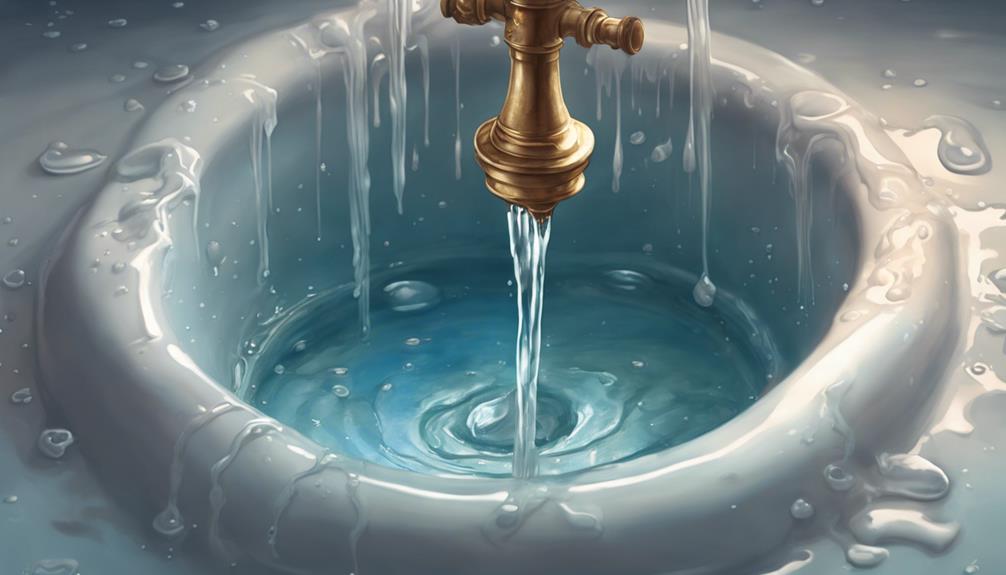
To effectively identify water leaks in your plumbing system, start by examining all visible pipes and fixtures for any signs of moisture or dripping. Check under sinks, around toilets, and near water heaters. Look for water stains on walls or ceilings, as these can indicate hidden leaks. To locate hidden leaks, monitor your water meter for any unexplained changes when water isn't in use. Listen for the sound of running water when no faucets are on. If you suspect a leak but can't find it, consider hiring a professional plumber with leak detection equipment.
Preventing mold growth is crucial when dealing with water leaks. Mold thrives in damp environments, making it essential to fix leaks promptly. Mold not only damages your property but also poses health risks. Ensure that any affected areas are thoroughly dried and cleaned to prevent mold spores from spreading. Use dehumidifiers to reduce moisture levels and consider applying mold inhibitors to prevent future growth. By addressing leaks swiftly and effectively, you can safeguard your home from the damaging effects of water and mold.
Dealing With Clogged Drains
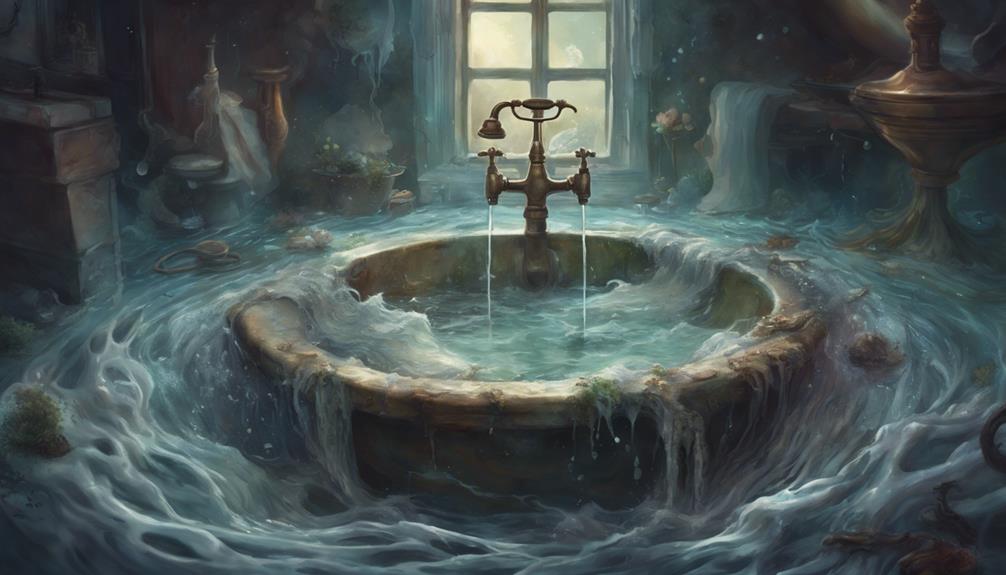
When faced with clogged drains, swift action is essential to prevent further plumbing issues and restore proper drainage in your home. To tackle this common problem effectively, consider utilizing drain snake techniques and natural drain cleaners.
Dealing With Clogged Drains
Here is a breakdown of the two methods you can use to address clogged drains:
| Method | Description |
|---|---|
| Drain Snake Techniques | Use a drain snake to physically dislodge the blockage within the pipes. |
| Natural Drain Cleaners | Utilize eco-friendly solutions like baking soda and vinegar to dissolve clogs. |
Fixing a Running Toilet
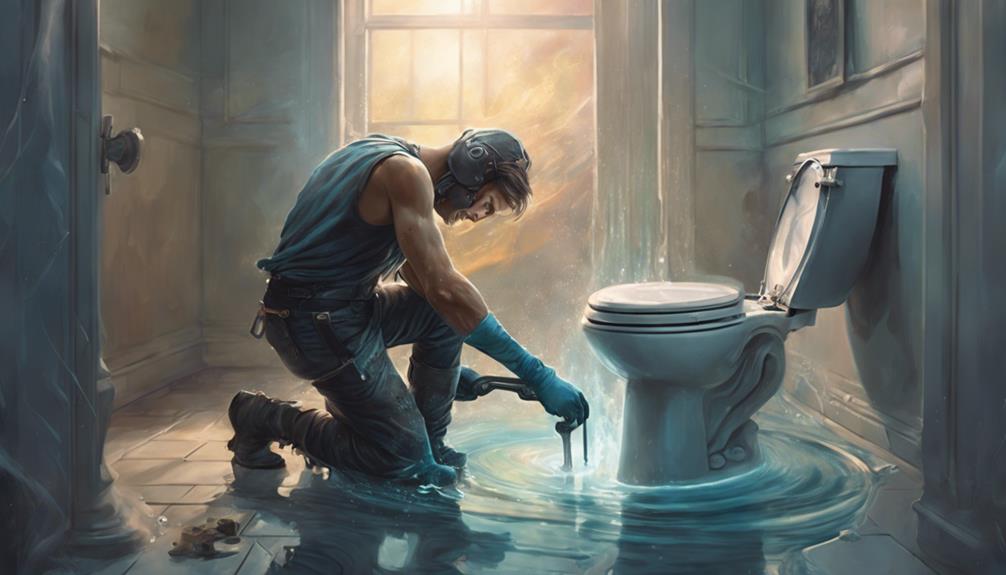
If you're experiencing a constantly running toilet, the issue may be attributed to a faulty flapper valve or a malfunctioning fill valve. A running toilet not only wastes water but can also significantly impact your water bill. Here's how you can fix it:
- Check the Flapper Valve: The flapper is a rubber piece that seals the water into the tank. If it's worn out or misaligned, water can continuously leak into the bowl.
- Inspect the Fill Valve: The fill valve controls the water level in the tank. If it's not functioning correctly, the tank may continuously try to fill up, causing the toilet to run.
- Adjust the Chain: Sometimes, the chain connecting the flapper to the flush handle can be too long or too short, preventing the flapper from sealing properly. Adjust it accordingly.
- Clean or Replace Parts: Sediment build-up can affect both the flapper and fill valve. Cleaning or replacing these components can often resolve the issue and stop the toilet from running unnecessarily.
Repairing Dripping Faucets
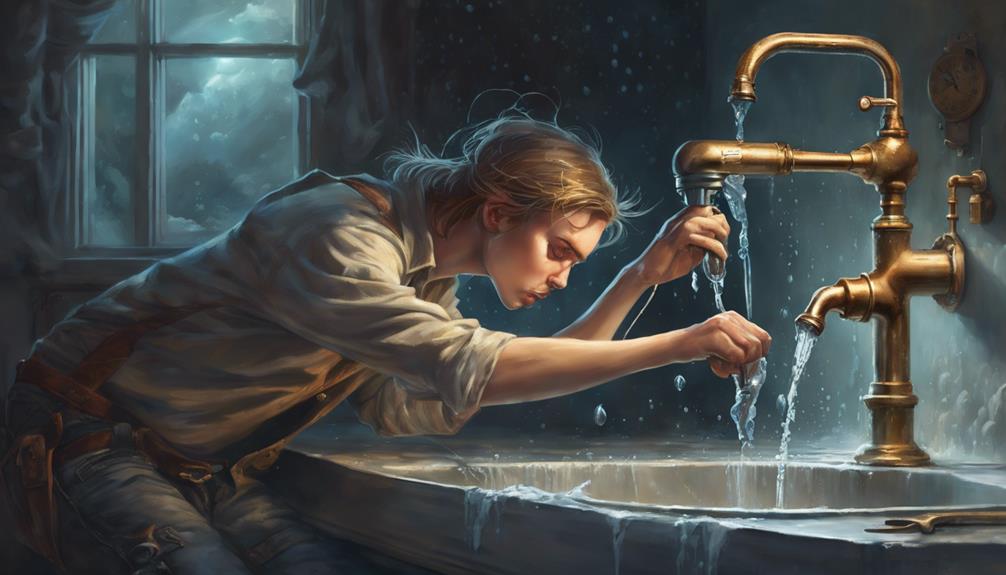
Repairing dripping faucets can be a straightforward task that can help save water and prevent further damage to your plumbing fixtures. One common cause of a dripping faucet is a worn-out washer. To address this issue, you can follow these simple steps for faucet maintenance and washer replacement:
| Steps to Repair Dripping Faucets |
|---|
| 1. Turn Off Water Supply |
| 2. Plug Sink Drain |
| 3. Remove Handle and Cap |
| 4. Replace Washer |
Resolving Low Water Pressure
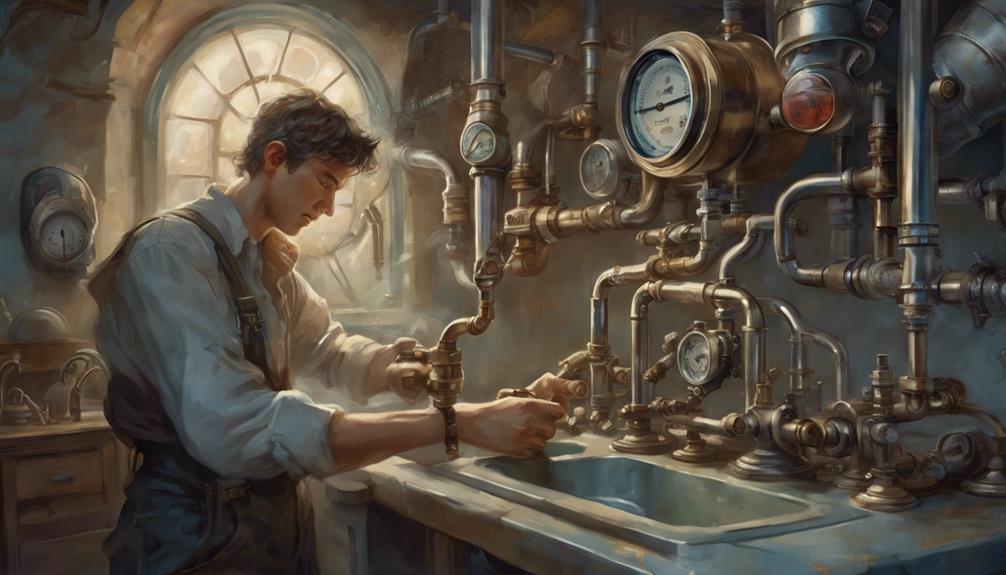
To address low water pressure in your plumbing system, start by checking for any obstructions or leaks in your pipes. Low water pressure can be frustrating, but with a systematic approach, you can often resolve the issue without the need for professional help. Here are some steps to help you tackle this problem effectively:
- Checking Pipes: Inspect all visible pipes for any signs of leaks, corrosion, or blockages. Pay close attention to areas where pipes may be hidden, such as under sinks or behind walls.
- Adjusting Pressure: Locate the main water supply valve and ensure it's fully open. Additionally, check if any individual shut-off valves along the pipes are partially closed, as this can restrict water flow.
- Clean Aerators: Remove and clean the aerators on your faucets. Sediment and debris can accumulate here, affecting water pressure.
- Consider Water Pressure Regulator: If the above steps don't improve water pressure, you may need to check if your home has a water pressure regulator that needs adjusting or replacing.
Frequently Asked Questions
How Can I Prevent Future Water Leaks in My Plumbing System?
To prevent future water leaks in your plumbing system, focus on plumbing maintenance. Regularly check for leaks, repair any issues promptly, and consider installing leak detection devices. Being proactive can save you from costly repairs down the line.
Are There Any DIY Methods for Unclogging Drains Before Calling a Professional Plumber?
When dealing with clogged drains, try natural remedies like baking soda and vinegar or using a plunger before resorting to chemical cleaners or drain snakes. These DIY methods can often clear minor clogs effectively.
What Should I Do if My Toilet Continues to Run Even After Attempting to Fix It?
If your toilet keeps running after you've tried fixing it, you may have a faulty flapper or fill valve. Troubleshooting toilet repair involves checking these components, ensuring water conservation and preventing costly leaks.
Is There a Way to Stop a Faucet From Dripping Without Replacing the Entire Fixture?
To prevent a faucet from dripping without replacing it, try cleaning or replacing the worn-out washer or O-ring. This simple faucet maintenance can often stop the leak temporarily. Detecting and fixing leaks promptly helps conserve water and prevent further damage.
What Are the Potential Causes of Sudden Low Water Pressure in My Home?
If you're experiencing sudden low water pressure, it could result from various causes like clogged pipes, water leaks, or problems with the pressure regulator. Fluctuations in water pressure often signal underlying issues that require attention.
Conclusion
In conclusion, tackling troublesome plumbing problems can be tricky, but with the right techniques, you can triumph over leaks, clogs, running toilets, dripping faucets, and low water pressure.
Remember to stay proactive in maintaining your plumbing system to prevent these pesky issues from recurring. By taking swift action and seeking professional help when needed, you can keep your pipes pristine and your water flowing freely.
Stay savvy and say so long to plumbing problems!